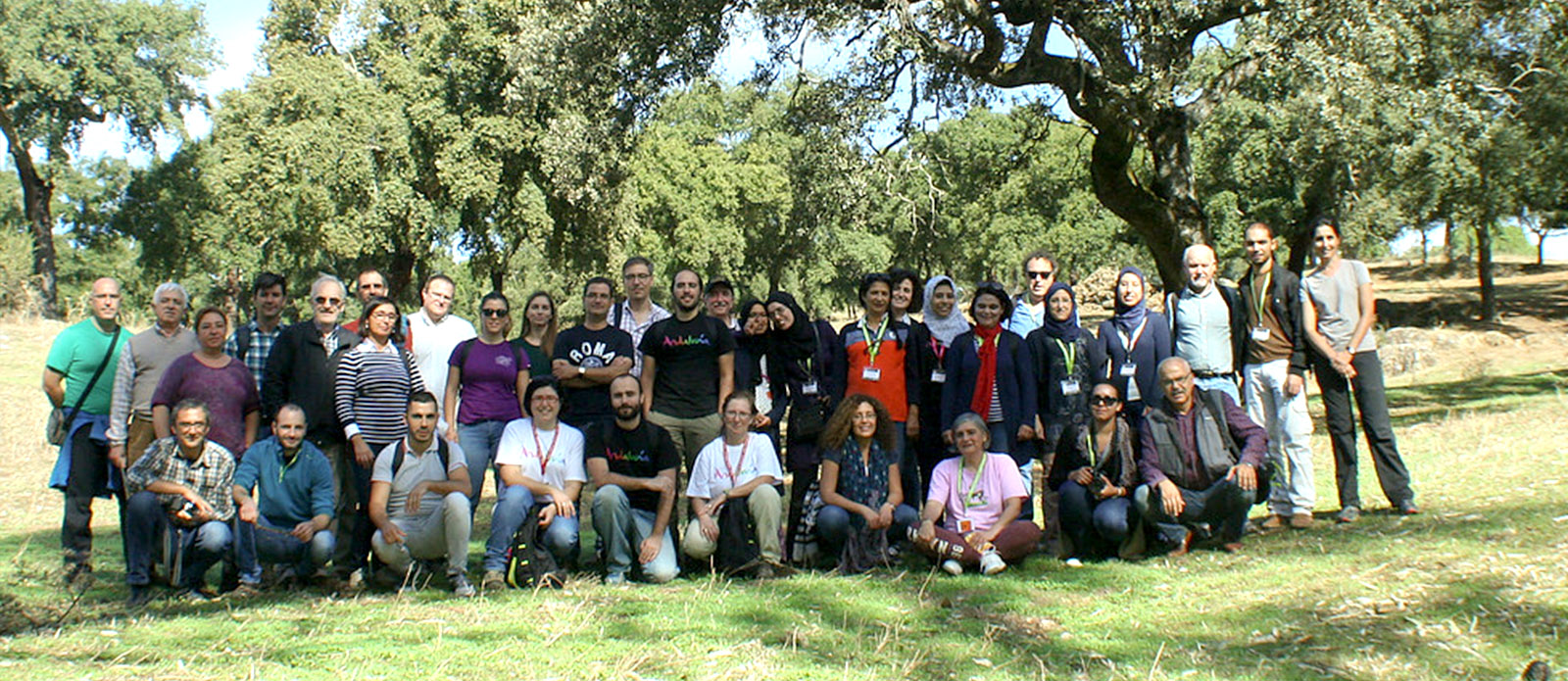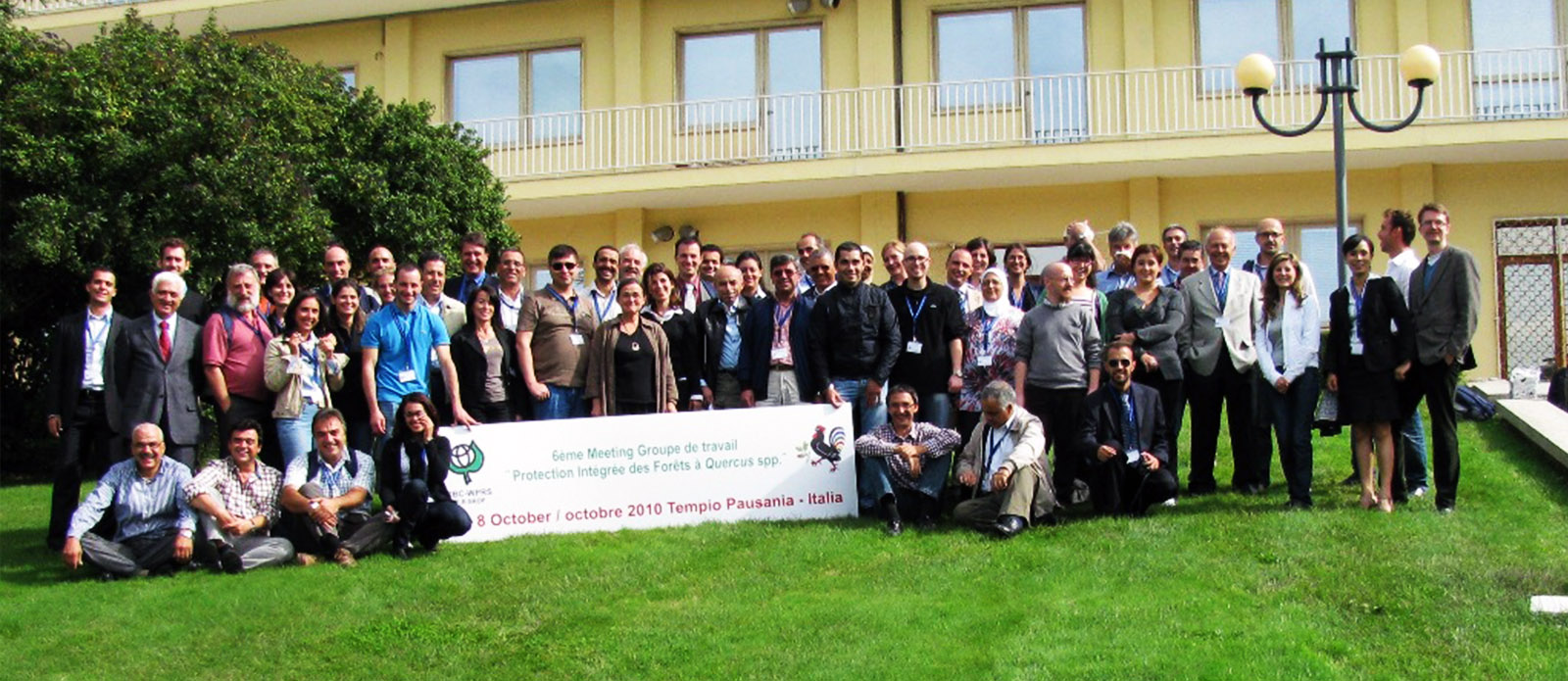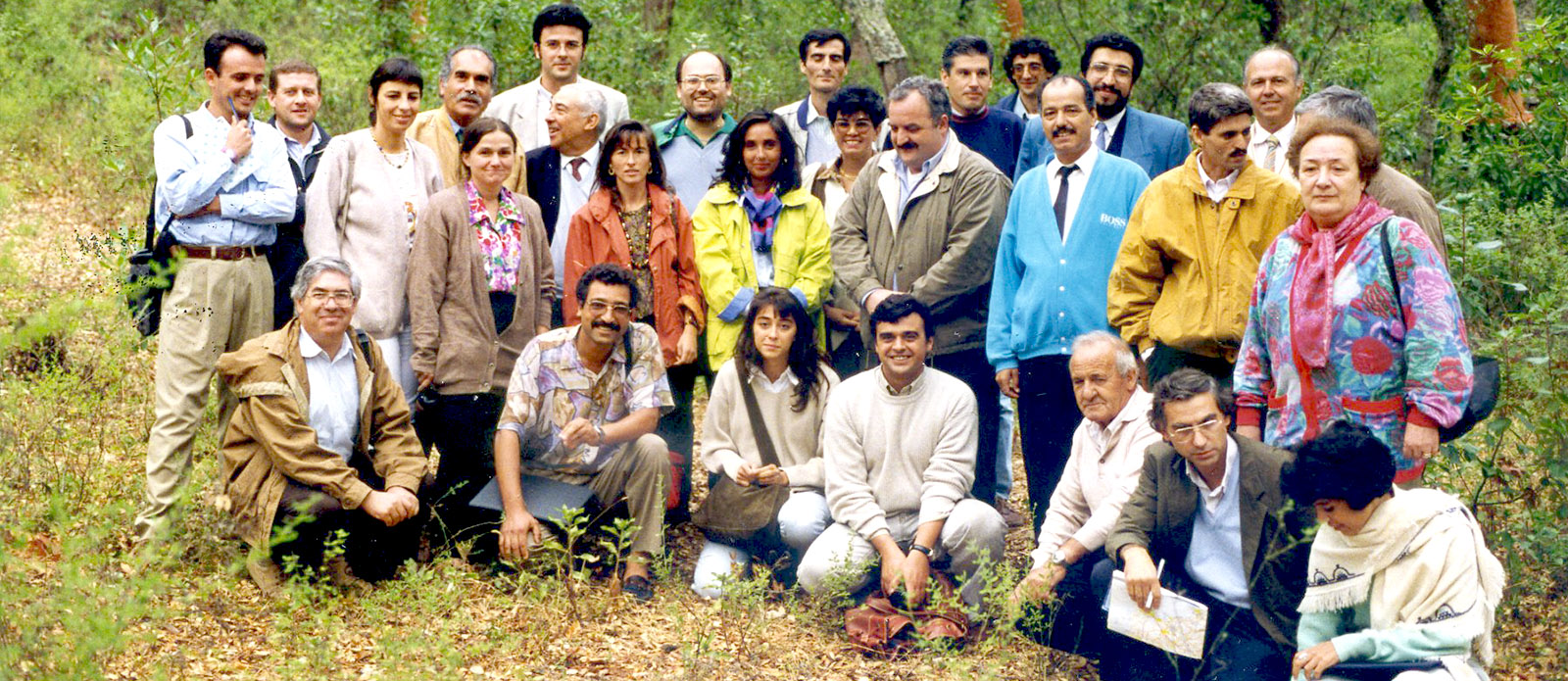Historical background analysis of the group
Historically, the IOBC began in 1955 as a global organization affiliated with the International Council of Scientific Unions (ICSU), with the objective of promoting, for pest control, realistic environmentally friendly methods, encouraging scientific collaboration, stimulating the dissemination of research and information and promoting the application of biological control and all methods that fit in an integrated pest management. Currently this organization includes six regional sections and various study groups, committees and working groups. The WPR is the West-Palearctic regional section. A working group is responsible for a specific program and for evaluation of the results obtained; it aims to:
- encourage collaboration among researchers belonging to several institutions members of WPRS and interested in the same research teams
- share experience and if possible also equipment, especially in joint or complementary research programs
- increase the general knowledge of its members and allow this knowledge to be available to the entire scientific community.
The group “Integrated Protection in Quercus spp. Forests” was founded in 1993. Its current convenor is Pino Angelo Ruiu (Sardinia, Italy) It includes about 40 members from different countries and is composed of experts in fungal pathogens, pests and forest management.
The working group organizes an international meeting every three years in order to develop multidisciplinary research on characterization of biotic and abiotic factors involved in the decay phenomena of oak forests, and to promote collaboration between European and North African researchers.
Up to now eight meetings of this working group have been held:
- the 1st took place in September 1994 in Tempio Pausania, Italy, and brought together 22 participants from 6 countries (Luciano ed., 1995)
- the 2nd in October 1998 in Salé, Morocco (60 participants, 9 countries) (Villemant ed, 1999)
- the 3rd in October 2001 in Oeiras, Portugal (70 participants, 7 countries) (Villemant & Sousa eds., 2002)
- the 4th in October 2004 in Hammamet, Tunisia (130 participants, 8 countries) (Villemant & BenJamaa eds., 2005)
- the 5th in October 2007 in Tlemcen, Algeria (90 participants, 7 countries) (Villemant et al. eds., 2010)
- the 6th in October 2010 in Tempio Pausania, Italy (75 participants, 10 countries) (Ruiu & Villemant eds., 2012)
- the 7th in October 2013 in l’Isle sur La Sorgue, France (50 participants, 7 countries) (Ruiu et Villemant, eds. 2014)
- the 8th in October 2016 in Cordova, Spagna (41 participants, 6 countries) ( Pino Angelo Ruiu, Maria Esperanza Sanchez and Mohamed Lahbib Ben Jamâa, eds., 2017).
It is indeed important to develop common strategies for the protection and conservation of Mediterranean oak forests, notably cork oak forests where economic and environmental aspects need to be addressed holistically. Large gaps still exist in our knowledge of the genus Quercus and many species remain seriously threatened. In recent years, especially in the Mediterranean Region, several problems like emerging pathogens and invasive insects, climate change, and drought and fires, have contributed to the deterioration of the health of these forests, requiring the development of new forest management and restoration tools. It is necessary to promote "sustainable forest management" in order to maintain the biodiversity, productivity, renewal capacity, vitality and potential of oaks.
Conclusions from the last meeting
The work presented during the meeting highlighted the following points:
- Forestry and phytosanitary issues of Mediterranean oak forests are extremely complex and fundamentally linked to human activities (bad silvicultural practices, fires etc) that promote appearance of decline phenomena, which are often considerable.
- Particular attention is given to the problem of fires, which damage every year thousands of hectares of forest, mainly cork oak forest causing considerable economic and environmental damage.
This damage will further increase with climate change therefore requiring Mediterranean forests to be highly adaptable. - To better understand the complex mechanisms involved in maintaining the forest balance, emphasis was given to soil studies, using a multidisciplinary approach.
- Studies on the phytosanitary situation of oak forests in the Mediterranean Basin increased over the years; these have provided important input for a better understanding of oak dieback and highlight factors that have a negative effect on forest regeneration.
These studies show the great recovery potential of oak forests but also that without silvicultural interventions dieback mainly due to pathogenic fungi and insect pests will rapidly increase. It is therefore essential to develop the most suitable methods to ensure good natural and/or artificial regeneration of forests.
Decline factors combined with poor silvicultural practices also cause decreasing cork growth and quality, which leads to abandonment of cork oak cultivation.
Attacks of pathogenic fungi, notably those of Phytophthora and Diplodia genera, show a worrying increase and are very difficult to fight. Studies are on the increase to better characterize these fungal pathogens and identify appropriate control methods.
Other studies focus on oak defoliators against which new biological control methods are tested, in addition to traditional ones.
The meeting helped to demonstrate that the majority of researchers use similar methods to assess oak decay and the impact of antagonist factors. There is a need for more collective effort to define common evaluation methodologies and strengthen international cooperation, which is beginning to give encouraging results.
The discussions showed clearly that a multidisciplinary approach is essential to understanding the various issues involved in the decay and regeneration of forests.
Moreover, it is important to include in the working group thematic subjects such as biodiversity and sustainable management, which are very important to better understand and protect oak forests, a major component of the Mediterranean ecosystems.
Objectives of this meeting
Recently, several problems threaten oak stands: emerging and invasive pathogens and insect pests, drought and wild fires, and oak forests at the Mediterranean Basin are particularly jeopardized. Climate change models for the region not only forecast a global increase in temperatures, but heavy rain episodes are expected to be concentrated over short periods of time and followed by long summer droughts. These predictable extreme environmental conditions could directly endanger the survival of high value Mediterranean oak ecosystems and would indirectly favour the incidence and severity of pests and diseases.
The meeting aims to relaunch the action of the Quercus Group on the issues related to:
- Bio-ecology of pathogenic fungi
- Bio-ecology of insect pests
- Integrated control
- Oak forest facing climate change and preservation strategies
- Phytosanitary status of oak forests
- Declining factors (biotic, abiotic and antropic) and their dynamics.
Some photos of the last meetings
8th WG Meeting, 23-27 October 2016, Córdoba, Spain

7th WG Meeting, 7-11 October 2013, Avignon, France

6th WG Meeting, 04-10 October 2010, Tempio Pausania, Sardinia, Italy

1st WG Meeting, September 1994, Tempio Pausania, Sardinia, Italy















